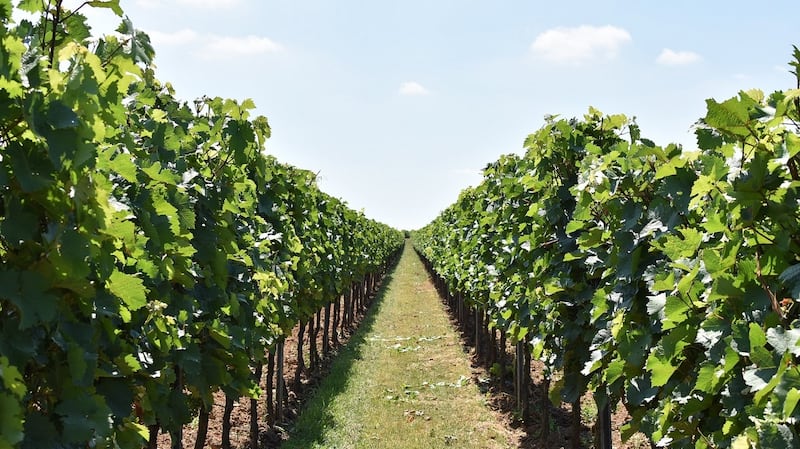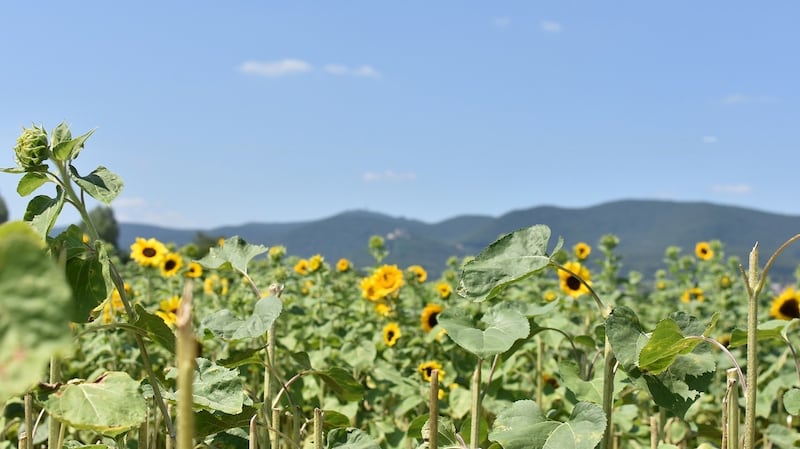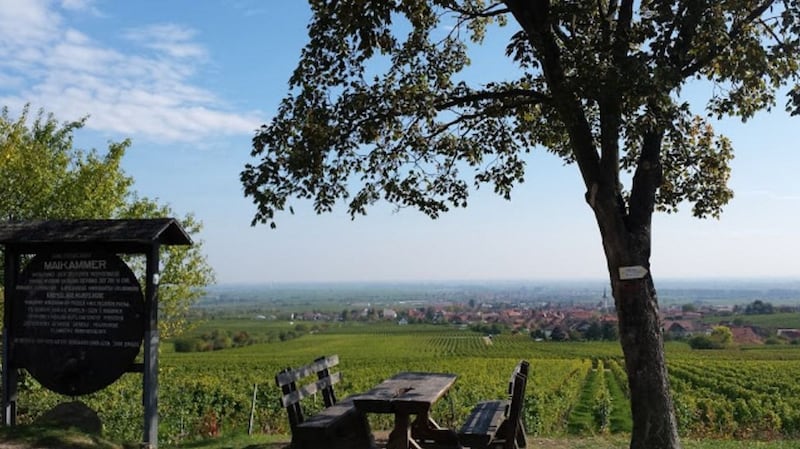Fionnuala Zinnecker moved from Dublin to Maximiliansau, a little village directly on the Rhein in the south of Rhineland-Pfalz, 14 years ago. “The idea was to stay for a year or two with my German boyfriend and see how things went. A marriage and three sons later, I’m still here.
“Although our move to the village was planned as a temporary thing, we’ve settled there. The planned move across the river into the town of Karlsruhe in Baden-Würrtemberg, where we work, never happened.
“We found we enjoyed the mentality of the Pfälzer, the locals. Their laid back attitude, love of wine and appreciation of home grown food suited us and we’ve found ourselves at home here now.”

Where is the first place you bring people to when they visit Südpfalz?
One of the first stops with visitors is the Gockelburg, a tiny little restaurant in our village of Maximiliansau. There is only one thing on the menu – half a roast chicken. That may not sound terribly exciting, but it has the crispiest skin of any chicken I’ve ever eaten and comes in four levels of spiciness. You eat with your hands and follow the meal with a glass of schnapps. The restaurant has been around for more than 40 years and has a queue out the door every night.
The top three things to do in Südpfalz, that don’t cost money, are ...
1. Visit a local festival: The almond blossom festival, Mandelbluetenfest, in Gimmeldingen takes place in late March when the almond trees are in full bloom of pale pink blossom. During April, May and June the locally grown white asparagus, is celebrated with festivals in various villages in the region. Once August rolls round, the wine festivals begin and continue through September into October. By mid-October the chestnuts are ripe and they too are celebrated at festivals such as the wine and chestnut market in Edenkoben. Here, in the grounds of the Villa Ludwigshoehe, reachable by a short walk uphill through the chestnut forest, visitors can wander through stalls selling chestnut bread, chestnut honey, roasted chestnut, as well as regional wines.
2. Take a hike: The chestnuts can be gathered on hikes through the Pfaelzer Wald, the Palatinate forest, as can freshly-fallen almonds in October. Hiking routes through the forest and vineyards are well signposted and, best of all, well equipped with little pubs and inns to stop off at for a rest, a meal and local wine. Many are very family friendly, with playgrounds, children’s menus and, if on a lake, pedal boat hire.

3. Swim in a lake: During the summer months, the swimming lakes (called Baggersee) are an ideal place to head to on a warm day. Usually there is no charge for swimming, although there may be a charge for the car park. Most Baggersee have some form of beach or grassy area to picnic or sunbathe on. Some even have a kiosk selling ice cream, drinks and chips and, of course, Bratwurst. It is a perfect way to relax and unwind with the locals.
Where do you recommend for a meal eaten outdoors on a sunny day?
A wine estate or a pub along a hiking trail make the perfect spot for a summery brunch, lunch or dinner in the Südpfalz. The shady patio of the Anselmann estate in Edesheim is a great spot to try local wines and have a bite to eat along with them, while the country pubs offer a taste of regional specialities such as liver dumplings, sauerkraut, various sausages, or Flammkuechen, a pizza-like tart of bacon, onions and creme fraiche – not to be missed on a trip here.
Where is the best place to get a sense of Südpfalz’s place in history?
The region of the Südpfalz is rich in history. The hills of the Palatinate forest are dotted with castles which are open to the public and offer an insight into the turbulent past of this region of Europe and the many changes in borderlines. Berwartstein Castle offers tours, a restaurant and accommodation within the castle as well as panoramic views across the countryside from its perch high on a sandstone rock. Ruins such as Castle Landeck in Klingenmuenster are set on manageable hiking routes, but also have parking available nearby for those who prefer a shorter climb. Trifels Castle at Annweiler served as a prison for Richard the Lion Heart, King of England, when he was captured on his return from the Crusades.

What should visitors save room in their suitcase for after a visit to Südpfalz
The wine. German wines, once ridiculed, have come a long way and there are some outstanding ones to try, many of which are generally not available outside Germany. Try the Riesling, Grauburgunder, Dornfelder and Spätburgunder. Booking a wine tasting at vineyard to two during a stay here is well worth it, but I recommend you stay in walking distance. Accommodation and restaurants abound. The town Sankt Martin and the old centre of Neustadt an der Weinstrasse are picturesque and quaint spots to stay in. Holiday homes in the small countryside villages are popular too, as are apartments set in the old outbuilding of vineyards. Wherever you stay, around here, you are never far from a glass of wine and a welcoming local.
If you’d like to share your little black book of places to visit where you live, please email your answers to the five questions above to abroad@irishtimes.com, including a brief description of what you do there and a photograph of yourself. We’d love to hear from you.










